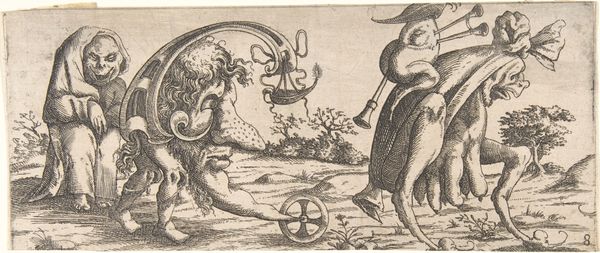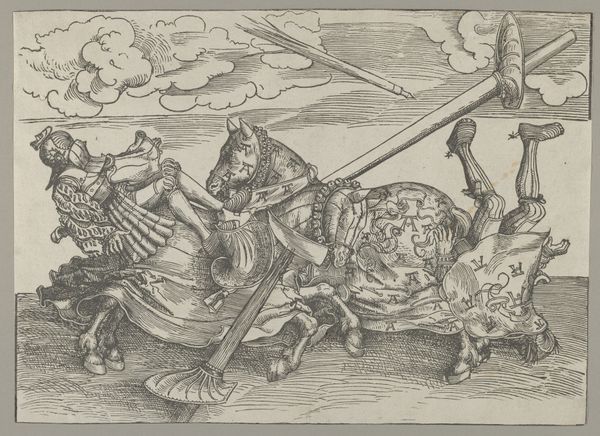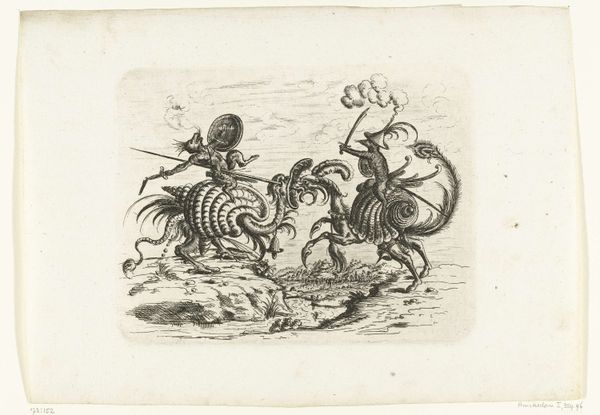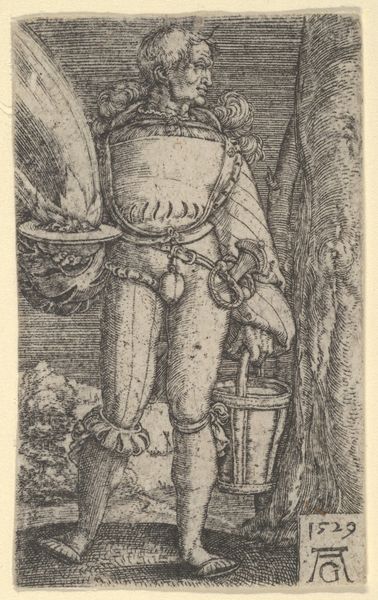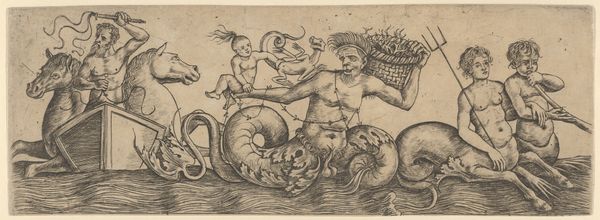
drawing, print, intaglio, engraving
#
drawing
#
ink drawing
#
pen drawing
# print
#
caricature
#
intaglio
#
figuration
#
line
#
grotesque
#
engraving
Dimensions: sheet: 3 11/16 x 12 1/2 in. (9.4 x 31.8 cm)
Copyright: Public Domain
Editor: This is Wendel Dietterlin the Younger's "Procession of Monstrous Figures," made around 1615. It's an engraving. It definitely has this satirical, almost darkly comical feel to it. What do you see in this piece? Curator: It’s fascinating, isn’t it? Consider the period: early 17th century, Europe still grappling with the aftermath of the Reformation, simmering religious and political tensions. This “procession” isn't just whimsical; it’s a potential commentary on power, authority, and social order. Editor: So you’re thinking these grotesque figures are stand-ins for actual figures in society? Like, a caricature of the elite? Curator: Precisely! Dietterlin, in employing caricature, offers a subversive critique. Who benefits from perpetuating monstrosity in the social order? Consider, too, that early modern art was often deeply invested in ideals of beauty and harmony. What does it signify when an artist so deliberately rejects these ideals? Editor: It’s like he's saying the system itself is monstrous. Are there other artists at this time that use this type of imagery? Curator: Definitely. Think of Bosch or Bruegel, for instance, artists who similarly used grotesque figures to critique society and human folly. Also consider the role of costume and carnival in social satire during this period. Does this inform how we should think of the figures Dietterlin constructs? Editor: I see what you mean; thinking about the costumes and almost performative nature of the procession offers new layers of interpretation about social and gender norms being questioned at that time. Thanks! Curator: It’s been a thought-provoking exchange. Hopefully we can continue this conversation next time!
Comments
No comments
Be the first to comment and join the conversation on the ultimate creative platform.
